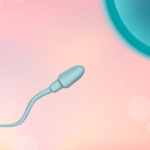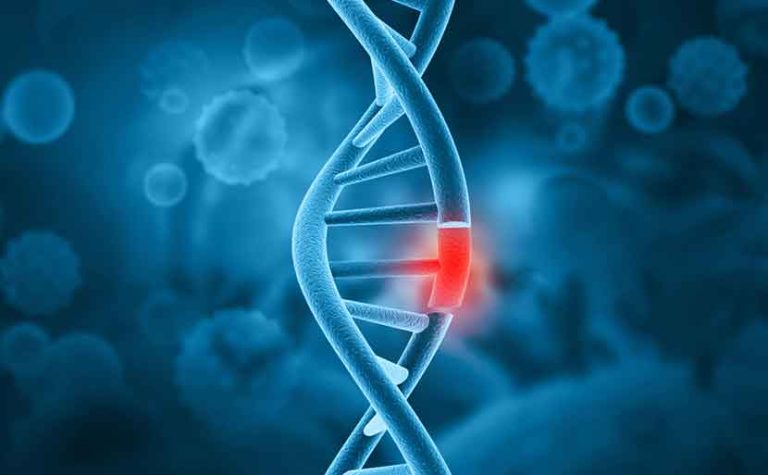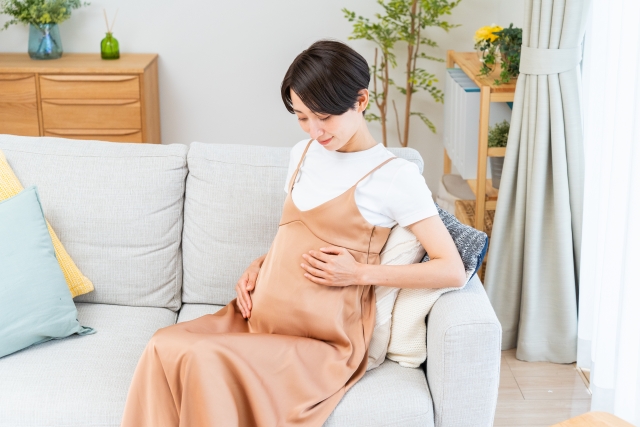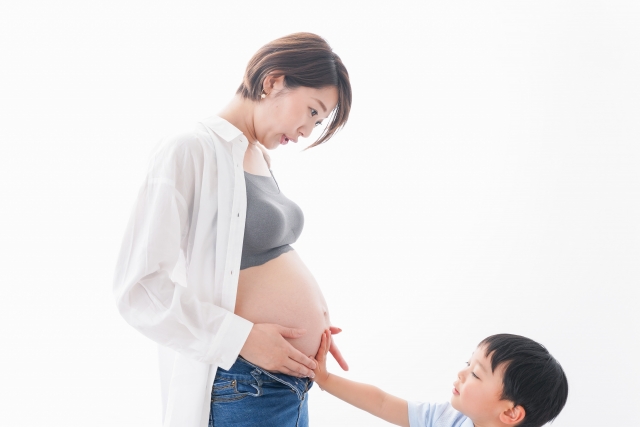Baby and mother’s condition at 10 weeks pregnant
At 10 weeks pregnant, the baby changes from an embryo to a fetus. The tail falls off, the head, torso and legs develop, and the organs begin to function. Understanding the condition of the baby at 10 weeks pregnant and what can and cannot be determined by prenatal testing, including ultrasound examinations, in advance is very important for having a healthy pregnancy.
Baby’s condition at 10 weeks pregnant
From about the 10th week of pregnancy, the fish-like embryo gradually changes into a human fetus. The webbed hands and feet begin to separate, and the organs begin to function.
Until then, you could only see the sound of your heart beating rapidly during an ultrasound examination, but at 10 weeks of pregnancy you can hear the thumping heartbeat quite clearly.
When the baby is first implanted in the uterus, it is only about 1mm in size, but by the 10th week of pregnancy it has grown to about 30mm in size and weighed about 10g.
It’s roughly the size of your pinky finger from the tip to the second joint, and it’s about as heavy as a tissue.
An ultrasound examination at around 10 weeks of pregnancy will allow you to see the baby’s movements.
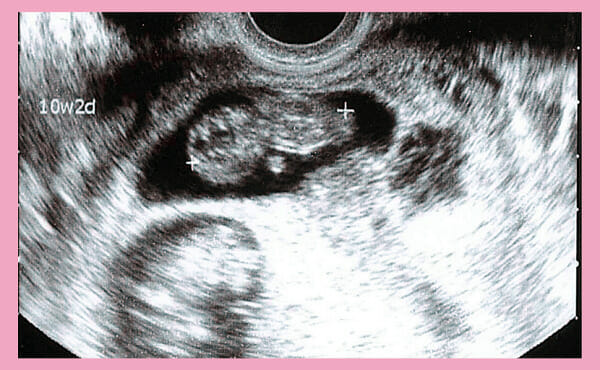
Ultrasound photo from the 10th week of pregnancy.
When can you find out the baby’s gender?
At 10 weeks of pregnancy, the baby’s organs begin to develop and differences between boys and girls begin to appear.
However, the baby is not yet fully developed enough to be able to determine its gender with an ultrasound examination, and the genitals can be difficult to see depending on the baby’s position and posture, so it is difficult to determine the gender at 10 weeks of pregnancy. However, after the 16th week of pregnancy, the baby’s body develops and the genitals become easier to distinguish with an ultrasound examination.
One of the earliest ways to find out the gender of your baby is NIPT (non-invasive prenatal testing) . NIPT (non-invasive prenatal testing) is said to be able to detect the risk of chromosomal abnormalities and gender of a baby with a high degree of accuracy using only the blood of a mother whose pregnancy has been confirmed by ultrasound testing. However, gender determination using NIPT (non-invasive prenatal testing) is not performed at NIPT-certified facilities. If you want to know the gender of your baby early using NIPT (non-invasive prenatal testing) , you will need to have the test done at a non-NIPT-certified facility.
Changes in the mother’s body at 10 weeks pregnant
At 10 weeks pregnant, the uterus grows as the baby grows, and various changes occur in the mother’s body. Although there are individual differences, many mothers experience morning sickness, which is one of the most common pregnancy symptoms, and experience loss of appetite and nausea that cannot be controlled.
Maternal status
What is your body like at 10 weeks pregnant?
The main changes that occur in your body during the 10th week of pregnancy are:
- The uterus gets bigger
- Stretching of the uterine muscles and ligaments
- Poor blood flow in the pelvis
- Changes in hormone secretion
Before pregnancy, a mother’s uterus was about the size of a chicken egg, but by the 10th week of pregnancy it is slightly smaller than your fist.
As the baby grows and the uterus expands, the muscles and ligaments of the uterus are stretched and blood flow in the pelvis becomes poor, causing the following symptoms:
- Tingling pain in the lower abdomen
- Discomfort at the base of the foot
- A feeling of heaviness in the lower back and vulva
When these symptoms start to appear, it is proof that the baby is growing and the uterus is getting bigger. At the same time, changes in hormone secretion can cause intestinal movement to become poor. This is also the time when more mothers start to suffer from constipation during pregnancy.
Things to be aware of during the 10th week of pregnancy
①Morning sickness
Morning sickness is a symptom that is particularly common among mothers in the 10th week of pregnancy.
The main symptoms of morning sickness are:
- Nausea and vomiting
- headache
- Becoming sensitive to smells
- Tinnitus
- Drowsiness etc.
Morning sickness usually begins between the 5th and 6th week of pregnancy and peaks between the 10th and 12th week.
The 10th week of pregnancy is said to be the most difficult time for morning sickness, so you need to find ways to eat without straining yourself. It is often said that “pregnant women should eat for two,” but if your morning sickness symptoms do not subside, there is no need to force yourself.
Babies have the ability to take the nutrients they need from their mothers, so it is not considered a problem if the mother reduces her food intake slightly.
During morning sickness, eat what you want, when you want, and get through it without forcing yourself.
However, if you lose more than 5% of your body weight or are unable to drink any fluids, you will be diagnosed with hyperemesis gravidarum and may be hospitalized for intravenous fluid therapy. If your morning sickness does not end after the 10th week of pregnancy or shows no signs of subsiding, you should see a doctor as soon as possible.
②Constipation
Constipation is another common symptom that can occur in pregnant women during the 10th week.
It is said that constipation becomes more likely due to the enlargement of the uterus, which reduces blood flow to the pelvis, and changes in hormone secretion.
Constipation can lead to more straining on the toilet, which can lead to hemorrhoids.
Try to make bowel movements easier by drinking plenty of fluids and doing light exercise according to your physical condition.
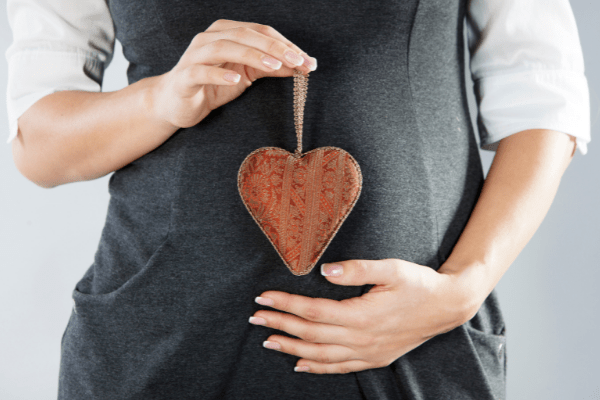
10 Weeks Pregnant Test
There are publicly funded prenatal checkups and self-funded tests available to mothers. What kind of tests can be taken at 10 weeks of pregnancy, and what can they tell us?
Prenatal checkups
At your 10th week of pregnancy, your prenatal checkup will include the following tests:
| Interview | Visit a doctor and understand your health status |
| Inspection and measurement | Fundus length, abdominal circumference, blood pressure, edema, urine test, and weight are basic tests that are performed every time to understand the health of the baby and mother. |
| health guidance | To help you stay healthy during your pregnancy, we will provide advice on diet and lifestyle, as well as counseling on mental stress. In some cases, we will work with local public health nurses to suggest using welfare services. |
| Blood tests | We check your blood type, blood count, blood sugar, hepatitis B antigen, hepatitis C antibody, HIV antibody, syphilis serum reaction, and rubella virus antibody to check for any infectious diseases. |
| Ultrasonography | Check your baby’s movements and development |
| Other Inspections | Cervical cancer screening, HTLV-1 testing, genital chlamydia testing |
Self-paid testing
In addition to prenatal checkups, mothers who are 10 weeks pregnant or older can undergo the following self-paid tests.
- Chorionic villus sampling
- Fetal check-up
- NIPT (New Prenatal Testing)
(At Hiro Clinic, we can perform the test as soon as pregnancy is confirmed by ultrasound even if the pregnancy is less than 10 weeks.)
Chorionic villus sampling
Chorionic villus sampling is a test in which a sample of the placenta called “chorionic villi” is taken either through the mother’s abdomen with a needle or via the vagina with a chorionic villus biopsy forceps to check for chromosomal abnormalities in the baby.
Chorionic villus sampling is considered to be a definitive diagnosis and can provide reliable diagnostic results, but it does have the disadvantage that it can also cause damage to the baby and increases the risk of miscarriage.
*The risk of miscarriage with chorionic villus sampling is 1/100
Fetal check-up
A fetal check-up is a test that can check for fetal illnesses using clearer images than a typical echo (ultrasound) test.
During prenatal ultrasound examinations, only blurry black and white images are seen, but fetal checkups allow you to check the condition of your baby with color, 4D images.
NIPT (New Prenatal Testing)
NIPT (New Prenatal Testing) can be performed as soon as pregnancy is confirmed by ultrasound. Similar to blood sampling for health checkups, this test detects the risk of chromosomal abnormalities in the fetus by taking blood from the mother’s arm.
NIPT (New Prenatal Testing) is considered to be highly accurate with a sensitivity and specificity of 99.9% for testing for Trisomy 21 (Down Syndrome) , which is said to have the highest incidence rate among chromosomal abnormalities . In addition, it can be said that there is almost no direct invasion (damage) to the fetus, unlike chorionic villus sampling.
What to do at 10 weeks pregnant
Applying for a Maternal and Child Health Handbook
When you reach 10 weeks of pregnancy, you should first apply for your Maternal and Child Health Handbook. There is a risk of early miscarriage while the baby’s heartbeat cannot be confirmed, so it is said that the 10th week of pregnancy is a good time to apply for your Maternal and Child Health Handbook.
There is no set time for applying for the Maternal and Child Health Handbook, but many mothers apply after the 6th to 10th week of pregnancy, when the baby’s heartbeat can be confirmed.
Deciding on the hospital and method of delivery
After receiving your Maternal and Child Health Handbook, it is important to proceed with planning for childbirth.
Nowadays, you can choose from a variety of birth methods, such as the place and position you give birth in. However, not all hospitals are compatible with the birth method you want, so it is a good idea to decide on a hospital early and make plans for birth.
NIPT (new prenatal testing) available at Hiro Clinic NIPT
At 10 weeks pregnant, the baby’s internal organs are almost fully developed and the heartbeat can be clearly heard. The uterus also begins to grow along with the baby’s growth, and various changes occur in the mother as well.
Prenatal checkups allow you to get a good understanding of the health of the mother and baby, and deal with pregnancy symptoms such as morning sickness and constipation. Also, it is impossible to determine the gender or all chromosomal abnormalities through prenatal checkups and ultrasound examinations alone.
At Hiro Clinic NIPT , once pregnancy is confirmed by ultrasound, we can check not only individual chromosomes to check for chromosomal abnormalities, but also chromosomes 1 to 22 and sex chromosomes. Rather than the conventional test that only checks for numbers, such as “there is one extra chromosome number ◯,” we can detect structural abnormalities in chromosomes, such as “ missing or duplicated chromosomes . “
If you have any questions about your baby’s gender, chromosomal abnormalities, or Trisomy 21 (Down Syndrome) , please contact Hiro Clinic NIPT . Our doctors and staff, who are well versed in NIPT (non-invasive prenatal testing) , will listen to any concerns you may have as a mother and your family and propose the best plan for you.
【References】
- Ministry of Health, Labor and Welfare – Prenatal Checkup Q&A
Article Editorial Supervisor

Dr Hiroshi Oka
NIPT specialist clinic, MD
Graduated from Keio University, School of Medicine
 中文
中文


